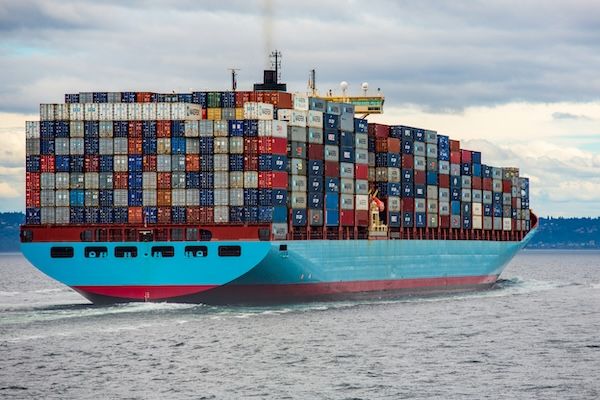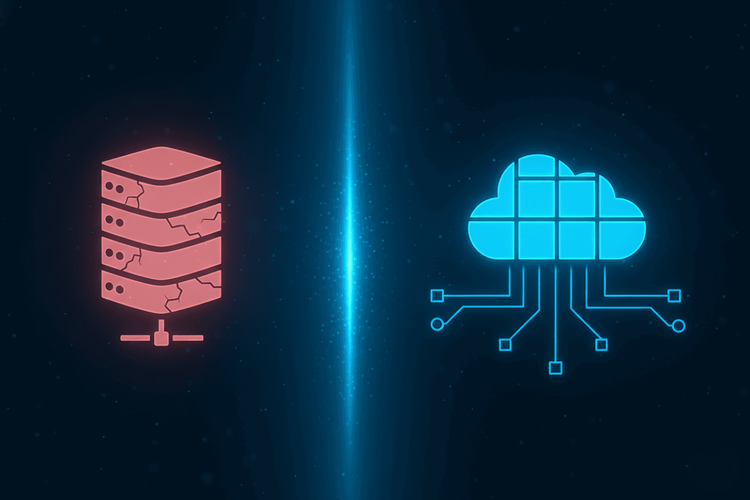Deployment Flexibility: The Foundation of Modern Scalability
True scalability begins with choice. Your deployment strategy should be dictated by your business needs, not by the limitations of your software. DecisionRules is built for this reality, offering a full spectrum of deployment models to match any enterprise requirement.
- For maximum speed and efficiency, our Public Cloud (SaaS) option provides effortless, hands-off scalability. We manage the infrastructure, the automated scaling, and the 99.99% availability, so you can focus entirely on your business logic.
- For total control and compliance, our Private Managed Cloud and Self-Hosted (On-Premise) options provide the same modern, containerized application for you to run in your own environment. You get the architectural benefits of a cloud-native platform while meeting the strictest data residency and security requirements.
This is flexibility by design. Whether you prioritize speed-to-market or data sovereignty, the choice is yours, and the high-performance experience is consistent.
Drools, in contrast, locks you into a rigid, traditional deployment model designed primarily for on-premise installation. This architecture immediately places the entire burden of infrastructure management squarely on your shoulders, requiring the setup of multiple complex components on a Java application server.
Even when containerized, the immense responsibility for designing, building, patching, managing, and, most critically, scaling the system falls entirely to your DevOps and infrastructure teams. This is not a simple task. Scaling a Drools environment is a major operational undertaking that requires deep and expensive expertise in Java performance tuning, server clustering, and load balancing. It is a significant, ongoing commitment that diverts valuable technical resources away from solving business problems and toward managing complex infrastructure.
This fundamental difference in deployment models translates directly into a decisive advantage in cost and speed. With the DecisionRules SaaS option, the entire category of operational overhead, from server procurement and patching to monitoring and scaling, is simply gone. These are the unavoidable and significant hidden costs of any self-hosted Drools environment.
By eliminating this burden, you free your most valuable technical resources to focus on a single task: developing the business logic that drives revenue. When you compare the total cost of ownership (TCO), the choice becomes clear. DecisionRules is not just a more modern platform; it is the more financially prudent and operationally sound decision for any business serious about growth.

Architectural Philosophy: API-First Agility vs. Monolithic Rigidity
Beyond deployment, the core architecture of your BRMS determines its performance, reliability, and cost to operate at scale. DecisionRules was architected from the ground up as a cloud-native, API-first platform. This means that every decision service is a flexible, stateless API, designed to be easily called from any system, anywhere in the world. This isn't just a technical detail, it's the key to effortless integration and limitless scaling.
Our stateless design allows for seamless horizontal scaling, letting you handle massive, unpredictable traffic spikes without a single point of failure. This architecture is already proven at immense scale, processing over 100 million mission-critical decisions per day for our global clients while maintaining consistently low latency.
Drools, at its core, was born as a Java library. It was designed to be embedded inside larger, monolithic applications, and this legacy architectural style creates significant scaling challenges. Even though the core engine is performant, it's trapped within the monolith. To handle more load, you can't just scale the rules, you are forced to scale the entire application it lives in. This is a fundamentally inefficient and costly approach to scaling.
This design directly leads to performance bottlenecks under heavy load. As traffic increases, users often report higher latency, especially when serving a global user base. The only workaround is to throw more money at the problem by over-provisioning expensive infrastructure to handle peak loads—a brute-force solution that is both financially inefficient and operationally complex.
Complex Workarounds: The Hidden Costs of Decoupling Drools
To escape the confines of the monolith, developers are forced to adopt complex workarounds. While options like KIE Server and Kogito exist to decouple Drools logic, they do not eliminate complexity, they simply shift it, introducing new operational burdens and hidden costs.
- KIE Server (Traditional Decoupling): This approach separates the rule logic by moving it to a dedicated server. However, you now own, manage, and maintain an entirely new piece of critical infrastructure. Your team is still responsible for patching, scaling, and ensuring high availability for this server, essentially trading an embedded problem for a distributed one that requires just as much operational effort.
- Kogito (Cloud-Native Approach): Kogito takes a modern microservices approach but comes with a critical, business-crippling trade-off: rules become immutable at build time. This means a simple business rule change—like adjusting a promotional discount—cannot be deployed dynamically. Instead, it must be treated as a full software release, requiring a developer to rebuild, re-containerize, and redeploy the entire microservice through a complex CI/CD pipeline. This completely undermines the promise of business agility, turning a simple business request back into a lengthy IT project.
Resilience by Design: Surviving Failure with a Smaller Blast Radius
This architectural divergence has a critical and direct impact on your system's resilience. The microservices architecture of DecisionRules is designed to contain failure. If one component experiences an issue, the impact is isolated, preventing a cascading failure from taking down your entire decisioning service. The "blast radius" is small and manageable.
A monolithic architecture, by contrast, creates a system with a dangerously large blast radius. A single point of failure, whether in the core application or in a complex component like a KIE Server, can jeopardize the entire system. For mission-critical operations like loan approvals, dynamic pricing, or insurance underwriting, this means that a minor issue can cascade into a major outage, putting revenue and reputation at risk. The architectural resilience of a true cloud-native platform isn't just a technical advantage, it is a fundamental business continuity safeguard.
The Black Friday Test: A Real-World Scaling Scenario
Let's make this real. Imagine your e-commerce platform is facing its biggest day of the year - Black Friday. Your dynamic pricing engine must handle a massive, unpredictable surge in traffic.
With DecisionRules, your team prepares by focusing on strategy. They refine the pricing rules to maximize revenue, confident that the cloud-native platform will scale automatically and seamlessly to meet demand, backed by a 99.99% availability SLA. Their focus remains entirely on the business, not the infrastructure.
With Drools, your team prepares for war. Weeks in advance, they must conduct extensive load testing, provision and configure a costly cluster of extra servers, and fine-tune complex load-balancing rules. On the day of the event, a dedicated DevOps team is on high alert, creating a "war room" to monitor and manage the fragile infrastructure. Your most valuable technical talent is diverted from creating value to preventing disaster. This isn't just a technical challenge; it's a massive, expensive, and high-risk operational burden.
True scalability isn't a single feature; it's the outcome of a superior architecture. While the Drools engine is powerful, its legacy design imposes a framework of constraints, increasing your costs, introducing unnecessary risk, and impeding your ability to grow. It forces you to spend your resources managing the platform's limitations rather than seizing business opportunities.
DecisionRules was built for the opposite reality. Our modern, cloud-native architecture and flexible deployment models provide a framework of opportunity, designed for the elastic, on-demand, and mission-critical needs of your enterprise.
Are you building for the constraints of yesterday or the opportunities of tomorrow?

